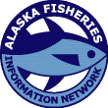Current Sea Surface Temperatures in the Eastern Bering Sea
This article is reprinted by permission from NOAA Fisheries. The original article can be found here.
A brief technical issue with the satellite data made the Bering Sea briefly appear cooler but nope, technical problem solved…the bigger problem (near record warming) persists…
What can we learn from sea surface temperatures?
To study marine ecosystems you have to unravel a series of complex relationships among oceanographic, biological, ecological conditions and fishing and other human activities in the marine environment. A key oceanographic factor that influences many of these relationships is sea surface temperature. Sea surface and bottom temperatures affect all parts of the marine food chain. Microscopic plants and animals (i.e., plankton and zooplankton) are affected as are the fish that eat them and the whales, seals and other predators that eat the fish. Ocean temperatures not only significantly influence where fish are when, but also, where fishermen must go to catch them.
We are going to provide biweekly updates on sea surface temperatures via social media @NOAAFisheriesAK and via this webpage to share what we are learning about current conditions in the eastern Bering Sea this year.

Sea surface temperatures as of July 21, 2020. Image: NOAA Fisheries.
Interpreting the Graph
The graph includes satellite-derived sea surface temperature data for the eastern and northern Bering Sea shelf (10m-200m). The northern Bering area is from 60-65ºN and the eastern Bering is from the AK Peninsula to 60ºN. Background grey lines include daily temperatures for each year with the 2003-2012 mean overlain in black. December data are plotted as part of the subsequent year (e.g., dark blue 2020 line includes December 2019). Figure courtesy of Jordan Watson, NOAA Alaska Fisheries Science Center.
How were these graphs generated?
We are developing regional graphs of satellite-derived SST data for the eastern and northern Bering Sea. Data are downloaded daily from satellites and averaged for each of the Alaska Department of Fish and Game statistical management areas (Watson 2019; https://psesv.psmfc.org/PSESV3.html).
Daily data for each of these statistical areas were then averaged within each region (northern or eastern Bering Sea) from June 2002 to present (the temporal extent of the JPL MUR SST dataset).
The data are available online and figures can be updated daily using the aksst R package, available here https://jordanwatson.github.io/aksst/.
